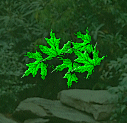


Managing Soil Structure for Water
Conservation in the Landscape
Soil quality is an integral part of water conservation. Well-developed soil allows irrigation water and rain to infiltrate rather than run off; it also has the capacity to retain the water that soaks in. Plant roots penetrate easily and deeply in quality soil and can reach water reserves held low in the soil profile.
Many interrelated factors go into building soil quality, and excellent books exist to explain them (for example see Building Soils for Better Crops, 2nd ed., Magdoff and van Es, 2000). By improving and maintaining one of these soil quality components, soil structure, landscape managers can promote water conservation in both new and existing landscapes. Building soil structure in new landscapes is generally easier than in established settings, simply because much of the work can be done before plants are installed; nevertheless it is entirely possible to build better soil in existing landscapes.
Structure is determined by the way in which individual soil particles bind together or "aggregate". This aggregation influences water movements into and through the soil. Healthy landscape topsoil is filled with various-sized aggregates and has a grainy, crumbly consistency; it contains more spaces for water passage and storage than poorly structured soil, which many be identified by very large chunks or "clods", or may have very few aggregates.
|
|
